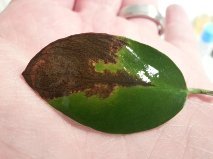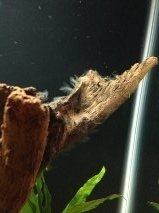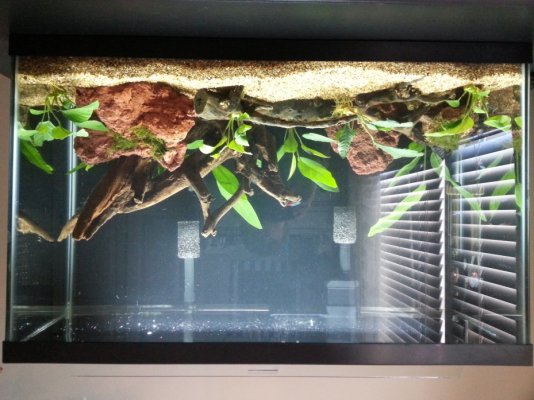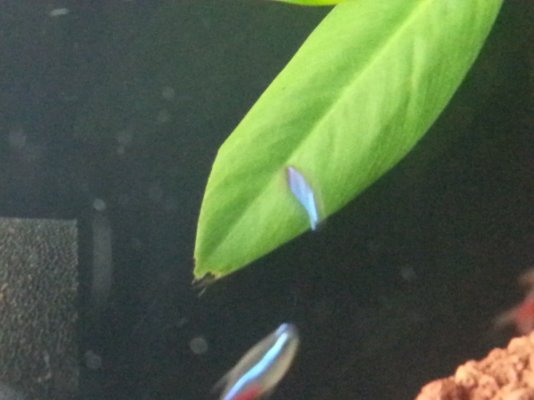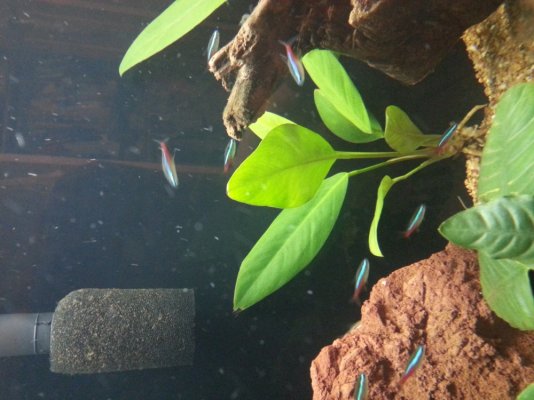malonbl
Aquarium Advice Activist
New tank (50 days old). Low light tank (T8 fluorescent) with a 8 hour photoperiod. Purchased various anubia species (3 nanas , 1 coffefolia, 3 frazerii), java moss and 3 small java fern that I planted in a single bunch. All of these were purchased from an online source that was recommended on this forum. Plants looked great upon arrival 1 week ago.
Put plants in the tank 1 week ago. Either tied to driftwood or planted just the roots (didn't cover rhizome). Have dosed once with flourish comprehensive. No plans at this time to dose CO2, although I have considered metricide 14 (and can if needed).
This pictured leaf was near the piece of fishing line I used to tie to the DW. I hoped that maybe I had just damaged the stem with the tie. However, I am starting to see some similar darkening at the tips of other leaves of this same anubia frazerii. All the other plants look really good at this time. Water testing well at 0 ammonia and nitrites and 5 ppm of nitrates.
Only other issue is some beard algae that I have only noticed on the driftwood.
Should I be concerned?
Put plants in the tank 1 week ago. Either tied to driftwood or planted just the roots (didn't cover rhizome). Have dosed once with flourish comprehensive. No plans at this time to dose CO2, although I have considered metricide 14 (and can if needed).
This pictured leaf was near the piece of fishing line I used to tie to the DW. I hoped that maybe I had just damaged the stem with the tie. However, I am starting to see some similar darkening at the tips of other leaves of this same anubia frazerii. All the other plants look really good at this time. Water testing well at 0 ammonia and nitrites and 5 ppm of nitrates.
Only other issue is some beard algae that I have only noticed on the driftwood.
Should I be concerned?

